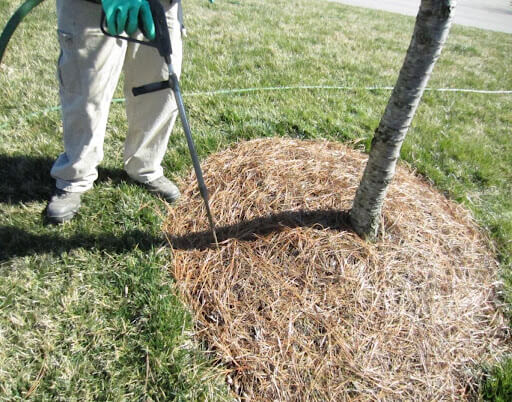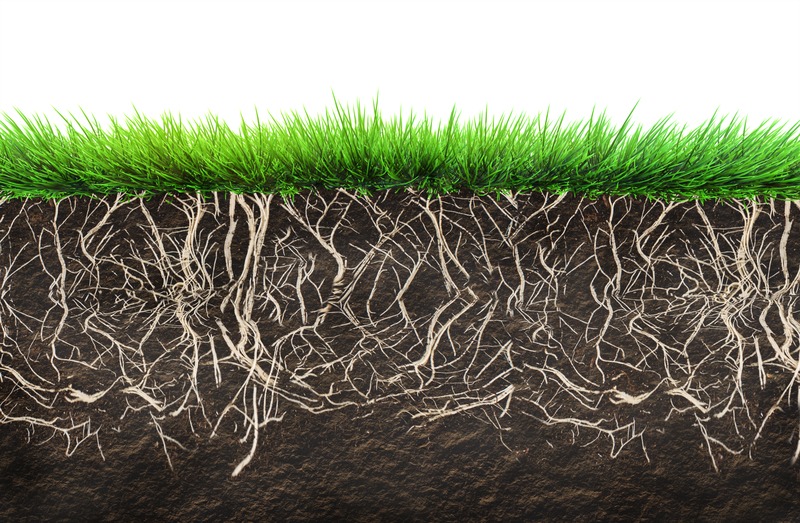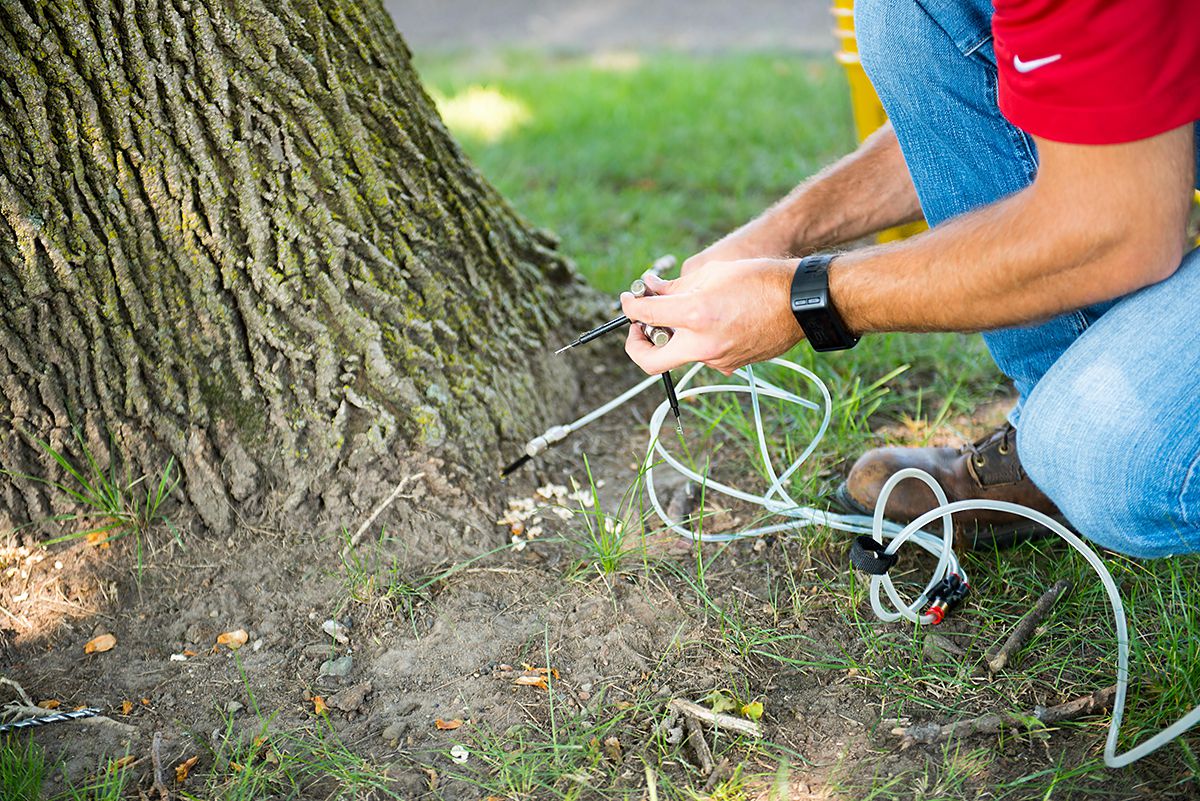Proper Water and Nutrients for Tree Health is critical
Ensuring proper watering and nutrient management is essential for maintaining the health and vitality of your trees. Adequate water and nutrients are vital for tree growth, development, and resilience against environmental stressors. At Arbor Solutions Tree Service, we understand the importance of proper tree care practices, including watering and nutrient management, in promoting healthy tree growth and longevity. In this comprehensive guide, we’ll explore the fundamentals of tree watering and nutrient management, providing expert advice and practical tips to help you optimize the health and vigor of your trees. Whether you’re a homeowner, landscaper, or property manager, our goal is to empower you with the knowledge and tools needed to support the optimal health of your trees and enhance the beauty of your landscape.
Importance of Watering: Learn about the critical role water plays in tree health, including how to determine when and how much to water your trees to promote optimal growth and resilience.
Essential Nutrients: Discover the key nutrients necessary for healthy tree growth, including nitrogen, phosphorus, potassium, and micronutrients, and how to ensure your trees receive adequate nutrition for vibrant foliage and strong root development.
Watering Techniques: Explore various watering techniques, such as deep watering and drip irrigation, to effectively deliver water to tree roots and prevent moisture stress, drought damage, and root rot.
Soil Management: Understand the importance of soil health in tree nutrition and learn how to assess and improve soil quality through proper mulching, aeration, and fertilization practices.
Seasonal Considerations: Gain insights into seasonal watering and nutrient requirements for trees, including adjustments needed during hot, dry periods, and winter dormancy to support tree health year-round.
Professional Consultation: Consult with our team of certified arborists for personalized advice and recommendations tailored to your specific tree care needs, ensuring the optimal watering and nutrient management for your trees' long-term health and vitality.
Watering your Trees

Nutrients for your Trees

Nitrogen (N): Essential for leaf and stem growth, nitrogen promotes lush foliage, vigorous shoot development, and overall tree vigor. It plays a vital role in chlorophyll production and photosynthesis, contributing to the tree's ability to synthesize carbohydrates and produce energy.
Phosphorus (P): Phosphorus is crucial for root development, flower formation, and overall plant health. It plays a key role in energy transfer within the plant, facilitating processes such as photosynthesis, respiration, and nutrient uptake. Adequate phosphorus levels promote strong root systems, improved flowering, and enhanced fruit and seed production.
Potassium (K): Potassium is essential for various physiological processes, including enzyme activation, osmoregulation, and water movement within the plant. It helps regulate stomatal function, enhancing the plant's ability to withstand drought stress and environmental fluctuations. Potassium also promotes disease resistance, cell wall strength, and overall plant vigor.
Calcium (Ca) and Magnesium (Mg): Calcium and magnesium are structural components of plant cell walls and play essential roles in cell division, enzyme activation, and photosynthesis. Calcium helps maintain cell membrane integrity and promotes root and shoot growth, while magnesium is involved in chlorophyll synthesis and protein formation. Adequate calcium and magnesium levels are crucial for maintaining overall plant health and vitality.
Sulfur (S): Sulfur is an essential component of amino acids, proteins, and vitamins, playing a key role in plant metabolism and growth. It contributes to chlorophyll synthesis, nitrogen fixation, and the formation of essential plant compounds. Sulfur deficiency can lead to chlorosis, reduced growth, and decreased plant vigor.
Micronutrients (Iron, Manganese, Zinc, Copper, Boron, Molybdenum): Micronutrients are essential for various biochemical processes within the plant, including enzyme activation, hormone synthesis, and electron transport. Iron is necessary for chlorophyll synthesis and photosynthesis, while manganese aids in enzyme activation and nitrogen metabolism. Zinc plays a crucial role in protein synthesis and carbohydrate metabolism, while copper is involved in electron transport and lignin formation. Boron regulates cell wall structure and calcium uptake, while molybdenum is essential for nitrogen fixation and enzyme activity. Adequate micronutrient levels are essential for maintaining overall plant health and function, ensuring optimal growth, development, and stress tolerance.
Watering Techniques

Deep Watering:
Benefits: Allows water to penetrate deeply into the soil, encouraging deep root growth and drought resistance.
Drip Irrigation:
Benefits: Delivers water directly to the root zone with minimal waste, promoting efficient water use and reducing water loss through evaporation.
Soaker Hose:
Benefits: Similar to drip irrigation, soaker hoses deliver water directly to the root zone, ensuring thorough watering while conserving water.
Watering around the Drip Line:
Benefits: Targets the area where the majority of the tree’s active roots are located, ensuring that roots receive adequate moisture for growth and nutrient uptake.
Mulching:
Benefits: Helps retain soil moisture, regulate soil temperature, suppress weed growth, and improve overall soil health, enhancing the effectiveness of watering techniques.
Soil Management

Soil Testing:
- Conduct regular soil tests to assess pH levels, nutrient availability, and soil texture.
- Use soil test results to determine the specific nutrient needs of trees and develop customized fertilization plans.
Mulching:
- Apply a layer of organic mulch around the base of trees to conserve soil moisture, regulate soil temperature, suppress weed growth, and improve soil structure.
- Maintain a mulch layer of 2-4 inches thick, keeping it several inches away from the tree trunk to prevent moisture buildup and potential trunk rot.
Aeration:
- Use mechanical or manual methods to aerate compacted soil around trees, improving soil structure and increasing oxygen penetration to the root zone.
- Aeration helps alleviate soil compaction, enhances root growth, and improves water infiltration and nutrient uptake.
Fertilization:
- Apply fertilizers based on soil test recommendations and tree species requirements.
- Use slow-release or organic fertilizers to provide a steady supply of nutrients over time and minimize the risk of nutrient runoff.
Water Management:
- Implement watering techniques that promote deep root growth and efficient water use, such as deep watering, drip irrigation, or soaker hoses.
- Monitor soil moisture levels regularly and adjust watering frequency and duration based on environmental conditions and tree needs.
Seasonal Care Tips

Spring:
- Prune dead, diseased, or damaged branches to promote healthy growth.
- Consider fertilizing trees to provide essential nutrients for vigorous spring growth.
- Monitor for signs of pest and disease activity and take appropriate measures to address issues.
Summer:
- Ensure trees receive adequate water, especially during periods of heat stress.
- Use soaker hoses or drip irrigation systems for efficient water delivery.
- Apply organic mulch around trees to conserve soil moisture and regulate soil temperature.
Autumn:
- Take advantage of the milder weather to plant new trees and shrubs in your landscape.
- Mulch newly planted trees to promote root establishment and winter survival.
- Continue watering trees as needed, especially during dry spells, to prepare them for winter dormancy.
Winter:
- Protect young or vulnerable trees from frost and freeze damage by wrapping their trunks.
- Avoid pruning trees during winter to prevent damage from frost and reduce the risk of attracting pests and diseases.
- Remove snow and ice buildup from tree branches to prevent breakage and damage.


